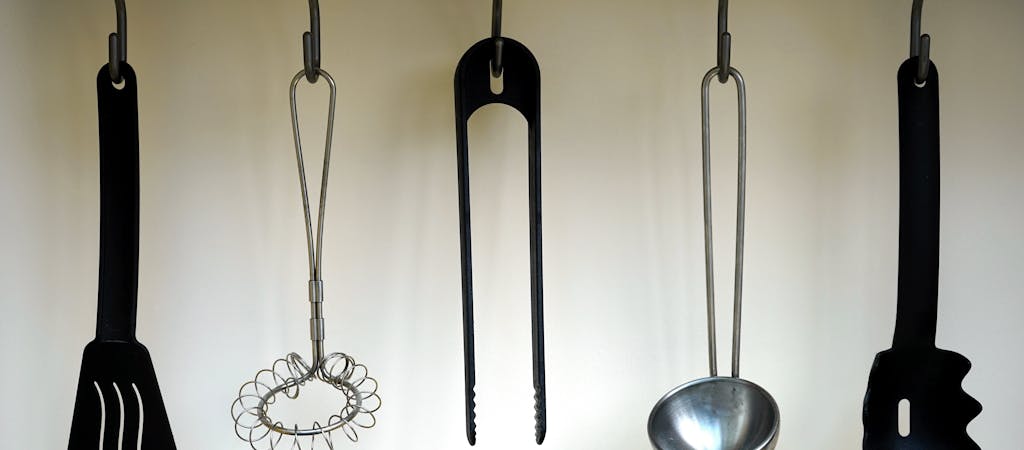
Transform Your Kitchen: From Chaos to Culinary Haven
Your kitchen is more than just a room; it’s the heart of the home. It’s where families bond over meals, where fledgling chefs come into their own, and where memories are lovingly simmered. But is your kitchen living up to its full potential? With shifts in design trends and the emergence of new gadgets, it might be time to revamp this vital space.
In this extensive guide, we’ll take a deep dive into the art of transforming your kitchen into a culinary haven, a place where functionality meets style, and your cooking ambitions are fully realized. Regardless of whether you’re an aspiring home cook or simply crave an updated space that reflects your tastes, these guidelines will become your recipe for kitchen success.
Understanding Your Needs: Building Your Culinary Profile
Before you pick out paint swatches or peruse Pinterest for inspiration, you need to understand how you use your kitchen. This involves assessing not only your cooking habits but also your storage needs, social space requirements, and personal aesthetic preferences.
Defining Personal Goals for the Kitchen
List out what you want to achieve with a kitchen renovation. Do you want more counter space for preparation? Are you an avid baker who needs specialized storage for ingredients and tools? Perhaps, you’re looking to create a space for hosting dinner parties or need to accommodate multiple cooks. Pinpointing your goals ensures that your redesign effort remains focused and highly beneficial to your lifestyle.
Assessing Daily Kitchen Activities
Monitor your daily kitchen activities for a week, and note down potential pain points. This could be crowded workspaces, inaccessible utensils, outdated appliances, or anything that slows down your culinary workflow. This exercise helps you tailor your transformation to solve specific issues.
Designing for Efficiency
Efficiency is the hallmark of any well-functioning kitchen. A space that is designed with the flow of cooking in mind saves you time and energy, which are crucial when preparing meals.
Optimizing the Kitchen Workflow
Familiarize yourself with the ‘kitchen work triangle’—the efficient movement between your stove, sink, and refrigerator. Ensure these elements are well-spaced and form a clear path. If they don’t, consider reorganizing or repurposing elements such as the kitchen island or the pantry to enhance the workflow.
Deciding on Kitchen Layout
The layout of your kitchen, whether it’s galley, L-shaped, or U-shaped, profoundly impacts its functionality. Each layout has its own advantages, and the choice depends on the nature of your cooking activities and the available space. If a major renovation is not feasible, even small tweaks to the layout, like installing a new shelving unit, can have a significant impact.
Selecting the Right Materials and Finishes
When it comes to selecting materials and finishes for your kitchen overhaul, durability meets design. The choice of countertops, flooring, cabinetry, and backsplashes has a profound effect not only on the aesthetics of your kitchen but also on its longevity and ease of maintenance. Opt for materials that can withstand the rigors of daily use—quartz and granite for countertops, ceramic or porcelain tiles for flooring, and high-quality laminates or solid wood for cabinetry. Additionally, consider the color and texture of these materials; they should complement your kitchen’s overall design theme while being practical. For instance, matte finishes on countertops can help hide fingerprints and smudges, making them ideal for busy kitchens.
Energy-Efficient Appliances
In the quest for a modern kitchen, selecting energy-efficient appliances is not just an environmentally conscious choice but also an economically smart one. Modern refrigerators, ovens, dishwashers, and other appliances come with energy ratings that guide you towards models that use less electricity and water, thus reducing your household’s carbon footprint and lowering utility bills. Furthermore, these appliances often embody the latest in culinary technology, providing precise temperature controls, improved cooking times, and added conveniences such as programmable settings and smart home integration. Whether you’re an enthusiastic home cook or a professional chef, incorporating these advances into your kitchen remodel can significantly enhance your culinary experience.
Budgeting and Timeline
Setting a Realistic Budget
Determine a realistic budget early in the process. Allocate funds to areas that will have the most impact on your kitchen’s functionality and aesthetic. Remember to include a buffer for unforeseen expenses.
Creating a Realistic Timeline
Consider the time it will take to order materials, receive deliveries, and complete the project. Plan your renovation around your lifestyle, taking into account the time for the kitchen to be out of service. If you’re doing a major renovation, you may need to set up a temporary kitchen elsewhere in your home.
Professional Help or DIY?
Deciding between hiring a professional contractor or taking the DIY route is a critical step in your kitchen remodeling project. This decision hinges on several factors—the complexity of the project, your level of expertise, and your budget. Professional help can ensure a hassle-free renovation, adherence to local building codes, and possibly a higher level of craftsmanship, as the team for kitchen renovations Calgary explains. Further, contractors often have access to more extensive resources and can provide valuable design advice. On the other hand, taking on a renovation yourself can save you money. If you’re confident in your skills, consider taking on smaller projects like painting or installing new fixtures.
Living Through the Renovation
Creating a Temporary Kitchen
Set up a space with essentials like a microwave, toaster oven, and refrigerator, so you can continue to prepare simple meals. Disposable dishes and utensils can minimize the mess and help you keep your temporary kitchen clean.
Managing the Stress
Understand that there will be dust, noise, and some chaos during the renovation. Establish a routine for meals, set realistic expectations, and remember that the result will be worth it.
After the Renovation
Once the dust has settled and the last tool has been packed away, take a moment to step back and admire your new kitchen. This is the result of your planning, investment, and patience. Enjoy the improved functionality and aesthetic beauty, but also consider documenting your renovation process and the choices you made. This can serve as a valuable reference for future projects or advice to friends and family. Additionally, thoroughly test all the new appliances and features to ensure everything is working correctly and familiarize yourself with their functions to make the most out of your culinary haven.
A well-planned kitchen renovation is a significant investment that pays off in comfort, convenience, and enjoyment. By understanding your needs, focusing on efficiency, selecting the right materials, and paying attention to the finishing details, you can create a space that not only looks stunning but makes cooking a pleasure. Remember, transforming your kitchen is about more than just adding value to your home—it’s about enhancing your life and creating a space that truly works for you.
Daily Newsletter
Subscribe to Jebiga for a dose of the best in gear, design, rides, tech and adventure.






